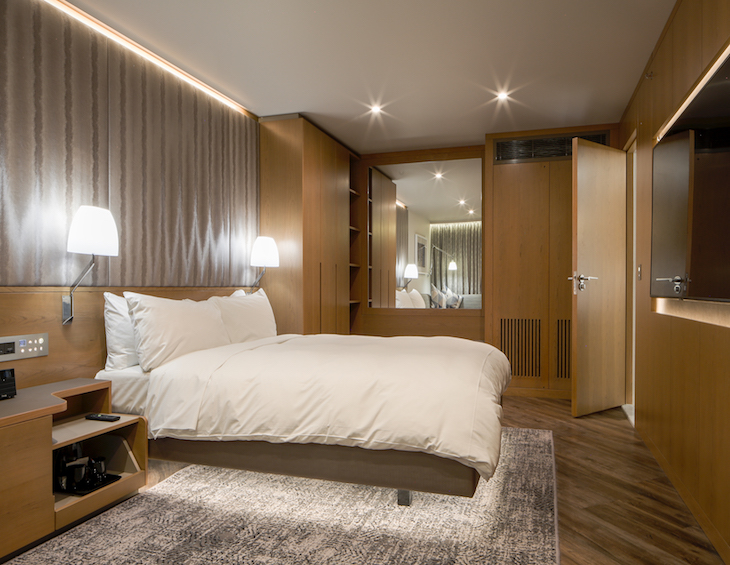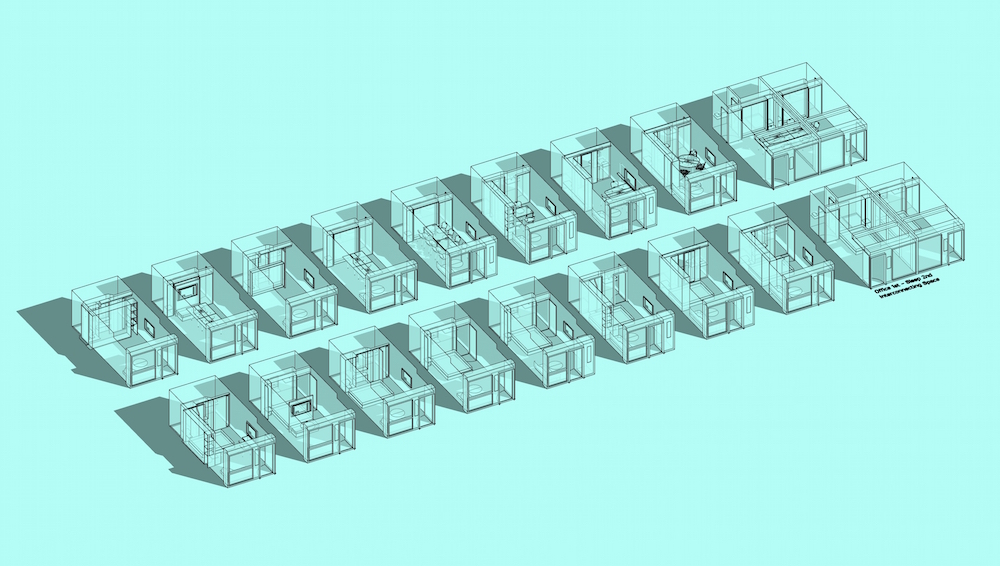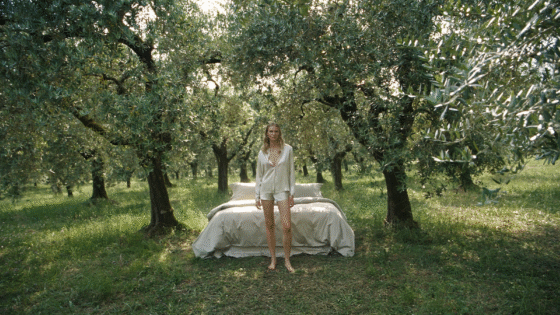No, it’s not a rendition of Snow White and the Seven Dwarfs’ “Hi ho hi ho it’s off the work we go”. Instead, designer Peter Mance, the director of MAAPS Design and Architecture, explains how hotels in the hospitality industry could adapt the ‘Fly in/fly out scheme…
FIFO (Fly In/Fly Out) is a common workforce rostering concept employed by the gas and mining communities.

With the move into our “Stay Alert” phase in the UK it may be the opportune moment for business focused hotels to explore and offer a FIFO business model to corporate and institutional teams. Expanding and adapting the concept of a family “Social bubble” to a new “Corporate bubble” which allows a way out of lockdown and a return of business to city-based hotels.
I see three converging drivers that may open up the concept of city FIFO arrangements for business travel and workforce accommodation in the short to medium term:
- Workers desire from an emotional and financial well-being perspective to return to work. In this I am noting Salesforce’s Marc Benioff recent remarks that the general anxiety about the coronavirus coupled with the isolation of being alone at home took an emotional toll on their workforce, with 36% saying they were experiencing mental health issues.
- The ongoing concerns around the control of virus spread, reduced public transport availability, concerns about environment pollution and the promotion of walking and cycling.
- And to ensure that teams, personnel, and wider social networks are kept safe throughout their day.
Perhaps the other question to be explored at this time is whether brands that operate off a smaller room footprint will be at a disadvantage because of this pandemic.
Return to work
You may have already noticed that five weeks into lockdown there has been a noticeable drop off in remote working productivity, incremental erosions of morale and collegiate purpose. Something is missing. Our experience with remote working has seen colleagues using Microsoft Teams and WhatsApp to keep a constant chat lines open throughout the day. A casual desktop presence so that colleagues can simply spend time (albeit virtually) close with one another, aware and sharing the incidental routines of the day, the coffee break, the toilet break, the cat wandering across the keyboard. Whether it is due to lack of decompression space at home, or anxieties piled on by housemates, parents or partners, I know that some of our younger staff are noticeably itchy to return to their desks and are asking “why isn’t our office our home as well?”.

Image caption: A model of what fly in/fly out could look like.
With the likely staggered returns, staggered days, and rotation of previously furloughed staff FIFO working methods could well become an effective way for institutional and corporate businesses to safely rebuild and reconnect teams over the evolving “Covid Secure” protocols which will be required until a vaccine is available.
Location, location, location
If we are to accept scientific and government advice, then Covid-19 will remain a continuing risk for many months to come. Given that this will be a slow and cautious readjustment I can readily imagine a scenario where both business and budget hotels or hostels can provide collegiate “Bubble Bookings” for companies. The same logic that has anchored many hotels to key transport nodes may for the short term provide the ideal FIFO workforce dormitory location. Allowing what are effectively “quarantined” staff to walk or cycle to their place of work and retreat at the end of the day to a secure, controlled, safe and hospitable environment.
We must anticipate that there will be a mixed degree of workforce acceptance or willingness to return to work. Many anxieties will remain about protecting loved ones at home. Over and above the basic guidance from our government, companies will be speaking with staff to agree how they can safely work, protect themselves, protect colleagues and families while starting to re-engage and drive our economy back to life. My sense is that the offer of a trusted hotel room for key staff can be one of the ways that we can bring people back to work, allow an appropriate level of protection and keep vital businesses going.
In know that hotels, in the absence of prescribed government guidance, will define their own pathway back to accepting guests. As has always been the case, it will be the operators and owners that carry the risk and responsibility for guest safety and will therefore look to transform and lead the way forward from the front foot. Happily, one of the paradoxes of the pandemic is that it will be an impetus for, not an impediment to, innovation.
Covid protocols
Hotels have already demonstrated they can successfully operate within the Covid climate and maintain impeccable hygiene standards. The first wave and initial lock-down saw the likes of Best Western, Hilton, Holiday Inn, Travelodge, Whitbread’s Premier Inn, Ibis, Mercure, Novotel and Adagio opening their doors to the NHS and other government mandated key workers, in addition to working with local and national government agencies during the repatriation of Brits returning home to the UK. Let us pivot this capability and knowledge to reassure future guests and demonstrate that business hotels remain an attractive option to businesses.
As a result, there may be future development opportunities for hotel operators to utilise their collective hospitality and logistical capabilities to provide “pop-up” accommodation within larger offices. Perhaps converting a couple of floors, or dormant retails spaces, and bringing in housekeeping resources and cleaning expertise to keep things in order.
Hotels will have already focused on upgrading their hygiene skills. Working with AHCP (Association of Healthcare Cleaning Professionals) to certify staff and institute improved procedures and protocols. I’m also aware of the many examples of patient hotels in Scandinavia and their expertise in maintaining a healthy comfortable environment with impressively low incidents of infections. Much as I am suggesting for FIFO work rostering to help the UK’s return to work, many of the patient hotels provide accommodation for doctors on six-month training periods at adjacent hospitals. It is therefore clear to me that the necessary level of preparedness and resources within the hospitality world already exist to keep guests and staff safe.
The size of rooms
It will not be about size of the guestrooms. It will be about the journey to it.
In my opinion hotels with compact room forms and long-stay options will be adept at welcoming guests back business guests. They will in fact have the advantage as their essential mode of operation is their studied efficiency, often with a stripped-down aesthetic, which will be eminently easier to clean and protect.

Image credit: MAAPS Design & Architecture
Much as it is being explored in the workplace arena, strategies for safer hotels and hostels post-Covid, will be using simple and cost-effective measures such as staggered room allocation to reduce density and the redesign of circulation routes to allow for one-way directional movement through the hotel. Adaptability will be key, with the ability for spaces and guest rooms to flex to accommodate perhaps a duel use – part guestroom, part office. With Club Quarters Hotel LIF Club Level guestrooms, we have explored similar transitional room concepts which are achieved through creative, yet uncomplicated, design solutions. Where shuttered internal windows between rooms and corridors provide visual outward connections. Now might the very moment that these experimental guestroom thoughts find traction.
Initial hotel concerns will focus on improvements to increase ventilation capacity and filtration, along with enabling one-way guest circulation through the hotel and guestroom levels. While there will be a reluctance to drop room count, hotels will have to reduce density for operational reasons. While we may not be able to stretch corridors, and until the pandemic passes, it should be feasible to identify new stacked cores through which to tread a new stair and ductwork network. With lifts then designated for upward distribution and stairs are down.
Closing thoughts
As I mentioned above, our younger design team members are craving for the incidental connections of life and a return to work. They would like nothing better than for us to provide the means, accommodation and safety of our own “Corporate bubble” close to work. Life in lock-down has thrown many things into relief. Among them the spaces in which we work, stay, and how they are purposed. Particularly, and in some instances painfully realised, as many of us have asked homes to carry the combined weight of work, sanctuary, school and gym. The FIFO accommodation model may help both business and hospitality transition back to an integrated life and foster lasting connections with location and community.
Oh, and you’d be well advised to plan for lots of additional bike storage!
MAAPS Design and Architecture is one of the brands that has taken advantage of our Industry Support Package. To keep up to date with supplier news, click here. And, if you are interested in also benefitting from this three-month editorial package, please email Katy Phillips by clicking here.
Main image credit: MAAPS Design and Architecture




